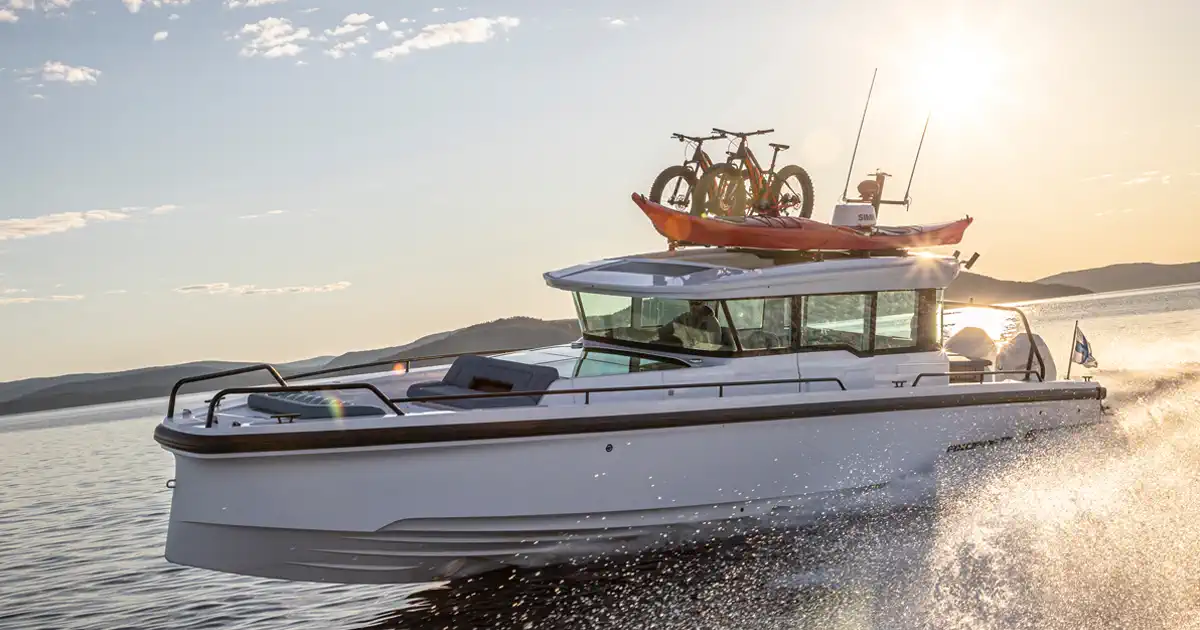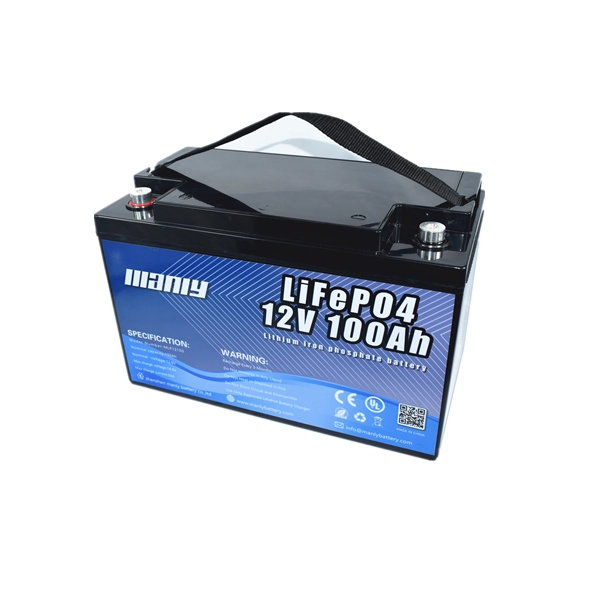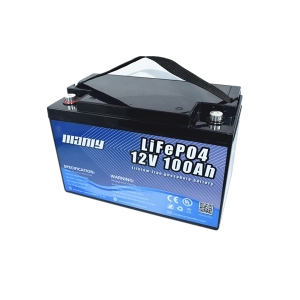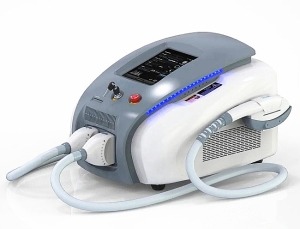2024 Quanto pesa uma bateria marítima?
Índice
- 2024 Quanto pesa uma bateria marítima?
- Importância do peso da bateria em aplicações marítimas
- As opções de bateria marítima mais leves
- Faixas de peso típicas para baterias marítimas
- Quanto pesa uma bateria de 12 V para barco?
- Diferenças de peso entre tipos de bateria
- Pesos de vários tamanhos de baterias marítimas
- Diferenças de peso entre baterias marítimas de partida e de ciclo profundo
- Uma bateria totalmente carregada pesa mais?
- Como o peso da bateria afeta o desempenho marítimo
- Comparação de peso entre baterias marítimas de célula úmida e de célula seca
- Como o peso da bateria marítima se compara ao peso da bateria do carro e do RV
- Calculando o peso total da bateria da sua embarcação
- Escolhendo entre peso, desempenho e custo em baterias para barcos
- Fabricante de baterias para barcos
- Conclusão
- Saiba mais sobre bateria

Importância do peso da bateria em aplicações marítimas
When it comes to marine applications, battery weight plays a crucial role in overall performance. Heavier batteries can slow down a boat and make it harder to maneuver, especially for smaller vessels like kayaks and canoes. Excess weight raises the boat’s center of gravity, increasing the risk of tipping and instability. Additionally, a heavier battery requires counterbalancing, which adds even more weight. This extra load reduces the power-to-weight ratio, causing the engine to work harder and leading to higher fuel consumption and lower efficiency. Even a small reduction in battery weight can significantly enhance speed and handling, especially for boats under 20 feet. Keeping batteries lightweight is essential for improving performance and safety across all types of marine craft.As opções de bateria marítima mais leves
The lightest marine battery option currently available is the marine lithium battery. These batteries can weigh 60-70% less than comparable lead-acid batteries with similar capacities. For example, a 100Ah lithium boat battery might weigh between 20-30 pounds, while a lead-acid counterpart could weigh anywhere from 60 to 100 pounds. This substantial difference makes lithium boat batteries the ultimate choice for weight-conscious boaters. A comparison of typical 100Ah battery weights highlights this advantage:- Íon de lítio:20 – 35 libras
- Ácido-chumbo AGM:60 – 80 libras
- Gel ácido-chumbo:60 – 80 libras
- Ácido de chumbo de célula úmida:80 – 120+ libras
Faixas de peso típicas para baterias marítimas
Marine batteries vary significantly in weight depending on their type and specifications. Understanding the typical weight range can help boaters choose the right boat battery for their needs. Here’s a breakdown of the expected weights for different battery types:- Íon-lítio:16 – 32 libras
- Ácido-chumbo AGM:30 – 60 libras
- Gel ácido-chumbo:35 – 75 libras
- Chumbo-ácido (célula úmida):50 – 120+ libras
Quanto pesa uma bateria de 12 V para barco?
The weight of a Bateria 12V para barcoo uso pode variar de acordo com seu tipo e capacidade. Geralmente, aqui está o que você pode esperar:- Baterias de barco de lítio 12V:Cerca de 20 a 35 libras
- Baterias AGM 12V:Normalmente pesa entre 30 e 60 libras
- Baterias de gel 12V:Geralmente variam de 35 a 75 libras
- Baterias de célula úmida de 12V:Pode pesar entre 50 e 120+ libras
Tipos de baterias de barco de 12V
There are several types of Baterias de barco 12Vdisponíveis, cada um com características únicas:- Baterias de lítio:Conhecida por ser a bateria marítima mais leve, oferecendo alta densidade de energia e longa vida útil.
- Baterias AGM:Oferecem bom desempenho e são à prova de derramamento, mas são mais pesados que o lítio.
- Baterias de gel:Semelhante ao AGM, eles são seguros e confiáveis, mas ainda assim são mais pesados.
- Baterias de células úmidas:A opção tradicional, são as mais pesadas e menos eficientes em comparação com as alternativas de lítio.
Todas as baterias marítimas são de 12V?
Not all marine batteries are 12V. While many smaller boats utilize 12V systems, larger vessels may use higher voltage batteries, such as 24V or 48V, for their power needs. The choice of voltage depends on the boat’s size, required power output, and electrical system design.Fatores que influenciam o peso da bateria
Several factors influence peso da bateria, Incluindo:- Tipo de Bateria:As baterias de lítio são geralmente muito mais leves que as opções de chumbo-ácido.
- Capacidade:Baterias de maior capacidade tendem a pesar mais devido ao aumento da quantidade de materiais utilizados.
- Desenhar:Os materiais utilizados na construção, como as placas de chumbo nas baterias tradicionais, contribuem significativamente para o peso.
- Tamanho do grupo:Diferentes tamanhos de baterias marítimas têm dimensões específicas que afetam seu peso total.
Comparação das baterias de barco mais pesadas e mais leves
When comparing the heaviest and lightest options:- Bateria marítima mais leve:As baterias de lítio lideram, com alguns modelos pesando apenas 16 libras para capacidades equivalentes.
- Bateria de barco mais pesada:As baterias tradicionais de chumbo-ácido inundadas podem exceder 120 libras, especialmente em grupos maiores, como o Grupo 31.

Diferenças de peso entre tipos de bateria
Understanding the weight differences between various battery types is crucial for selecting the right marine battery for your vessel. Each type has its own characteristics that affect battery weight, making it essential to choose wisely.Pesos de baterias de chumbo-ácido
Flooded lead-acid batteries are the heaviest among marine batteries. Typically, their weights range from 50 to over 120 pounds, depending on the specific group size. For example, a group 31 battery weight can easily reach 70-90 lbs. This significant weight is due to the dense lead plates and liquid sulfuric acid inside, making them less suitable for weight-sensitive applications.Pesos de bateria AGM
Absorbed Glass Mat (AGM) batteries are a popular choice for many boaters. They generally weigh between 30 and 60 pounds, making them lighter than traditional lead-acid batteries but still heavier than marine lithium batteries. AGM batteries offer good performance and are spill-proof, but their weight can impact overall boat agility.Pesos de bateria de gel
Gel batteries are similar to AGM in weight, typically ranging from 35 to 75 pounds. These batteries contain a gel electrolyte, making them safer and less prone to leaks. However, they still don’t match the lightweight nature of lithium options. Their weight can be a consideration for smaller boats where every pound counts.Pesos da bateria de íon-lítio
Lithium-ion batteries are the lightest marine battery option available today. Weighing between 16 and 32 pounds, they provide substantial weight savings compared to lead-acid and AGM batteries. For instance, a 100Ah lithium boat battery can weigh as little as 20-30 lbs, significantly enhancing performance and efficiency. The lightweight design and higher energy density make lithium batteries an ideal choice for modern marine applications.By comparing these weights, boaters can make informed decisions based on their specific needs, balancing battery weight with performance and capacity.Pesos de vários tamanhos de baterias marítimas
The weight of baterias marítimaspode variar significativamente dependendo do tamanho do grupo, que se refere às dimensões físicas – comprimento, largura e altura. Compreender esses pesos é vital para escolher o caminho certobateria de barcopara sua embarcação. Aqui estão os tamanhos de grupo comuns e seus pesos típicos:- Grupo 24:Geralmente pesa entre 50 e 70 libras. Este tamanho é popular para barcos menores e frequentemente usado para aplicações de partida e ciclo profundo.
- Grupo 27:Normalmente pesa cerca de 60 a 80 libras. Este grupo é um pouco maior e fornece mais potência, tornando-o adequado para embarcações de médio porte.
- Grupo 31:Uma escolha comum para barcos maiores, o peso da bateria do grupo 31 varia de 70 a 100 libras. Essas baterias são frequentemente usadas para aplicações de ciclo profundo devido à sua capacidade.
- Grupo 8D:Esta é uma das opções mais pesadas, pesando entre 100 e 120 libras. É usado principalmente em barcos maiores que requerem potência substancial.
Diferenças de peso entre baterias marítimas de partida e de ciclo profundo
Starting and deep cycle batteries serve different purposes, and their weights reflect these differences.Starting Batteries are designed to provide a short burst of high current to start an engine. They typically weigh less than deep cycle batteries because they have thinner plates and are built for quick discharge. A lightweight boat battery of this type might weigh around 30 to 60 lbs, depending on the group size.Deep Cycle Batteries, on the other hand, are built to provide sustained power over a longer period. These batteries are generally heavier, often weighing between 50 and 120 lbs. Their thicker plates allow for deeper discharges and longer usage times. For instance, a group 31 battery weight for a deep cycle option can reach the higher end of that range, making it more suitable for powering electronics and other equipment over time.Understanding the weight differences between these battery types can help boaters choose the right option for their specific needs, balancing weight with performance and capacity requirements.Uma bateria totalmente carregada pesa mais?
The question of whether a fully charged battery weighs more is an interesting one. In general, a bateria de barconão muda significativamente de peso quando totalmente carregado em comparação com quando está descarregado. As reações químicas que ocorrem dentro da bateria não adicionam nem removem nenhum material; eles simplesmente mudam o estado do eletrólito. Portanto, seja uma bateria marítima ou uma bateria marítima de lítio, o peso permanece efetivamente o mesmo, independentemente do nível de carga.Como o peso da bateria afeta o desempenho marítimo
Battery weight has a direct impact on marine performance. A lighter battery, such as the lightest marine battery options available, can enhance speed, maneuverability, and fuel efficiency. For smaller vessels, a lightweight boat battery can improve responsiveness, making it easier to navigate and control the boat. Excessive battery weight can raise the boat's center of gravity, making it more prone to tipping and less stable, which can compromise safety.For larger boats, while they may accommodate heavier batteries better, excess weight still affects overall performance. It can reduce the engine's efficiency, requiring more fuel to maintain speed and leading to slower acceleration. This is particularly important for boaters looking to optimize their vessel's performance for long trips or competitive situations.By choosing the appropriate battery weight, boaters can ensure better handling, improved speed, and enhanced overall performance on the water.Comparação de peso entre baterias marítimas de célula úmida e de célula seca
Yes, there is a notable weight difference between wet-cell and dry-cell marine batteries. Wet-cell batteries, such as traditional flooded lead-acid types, tend to be heavier due to the liquid electrolyte they contain. Their weight can range from 50 to over 120 lbs, making them some of the heaviest options available. In contrast, dry-cell batteries, including AGM (Absorbed Glass Mat) and lithium boat batteries, are generally lighter. For example, AGM batteries typically weigh between 30 and 60 lbs, while marine lithium batteries can weigh as little as 16 to 35 lbs. This significant difference in battery weight makes dry-cell options more favorable for those looking to reduce the overall weight of their vessel, enhancing performance and maneuverability.Como o peso da bateria marítima se compara ao peso da bateria do carro e do RV
When comparing marine battery sizes to car or RV batteries, it's essential to consider their specific applications and weight ranges. Car batteries are generally similar in weight to smaller marine batteries, typically ranging from 30 to 50 lbs. However, larger RV batteries, especially those designed for deep cycle use, can weigh significantly more, often between 60 and 120 lbs, similar to heavier marine batteries like group 31 battery weight options.In summary, while there are overlaps in weight categories, marine batteries tend to be designed for different use cases, focusing on weight distribution and performance in watercraft. The lighter options in the marine category, particularly lithium boat batteries, offer distinct advantages in performance compared to the traditional heavyweights found in automotive and RV applications. By choosing the right battery weight for their needs, boaters can optimize performance while maintaining the balance and efficiency of their vessels.Calculando o peso total da bateria da sua embarcação
When planning for a boat battery system, understanding the battery weight is crucial for overall vessel performance. To calculate the total battery weight, start by identifying the number of batteries you'll use and their individual weights. For instance, if you’re using a group 31 battery, which typically weighs around 70-80 pounds, multiply this weight by the number of batteries. Additionally, consider the marine battery sizes and marine battery dimensions to ensure they fit properly in your boat’s designated battery compartment. Always include any extra weight from accessories, such as connectors or mounting hardware, to get an accurate total. By carefully calculating the total battery weight, you can ensure optimal performance and balance for your vessel.Escolhendo entre peso, desempenho e custo em baterias para barcos
Selecting the right boat battery involves balancing weight, performance, and cost. Lightweight options, like marine lithium batteries, offer substantial benefits, including longer lifespans and faster charging times, which enhance overall performance. However, they may come at a higher initial cost. In contrast, traditional lead-acid batteries might be more affordable but can weigh significantly more, impacting your boat’s agility and speed. When considering the lightest marine battery options, weigh the benefits against your budget and intended use. Evaluate factors such as marine battery sizes and whether the reduced weight aligns with your performance goals. Ultimately, the right choice will depend on your specific boating needs and how you prioritize each aspect of battery selection.Fabricante de baterias para barcos
 When it comes to choosing a reliable boat battery, the manufacturer plays a crucial role in ensuring quality and performance. MANLY Battery stands out as a premier producer of marine batteries, with over 13 years of excellence in the industry. Located in key regions of China, such as Shenzhen, Dongguan, and Huizhou, MANLY operates a state-of-the-art facility covering 65,000 square meters. With an impressive daily production capacity of over 3,000 batteries, MANLY delivers a wide range of battery solutions, including marine lithium batteries that cater to diverse applications, from solar energy systems to advanced robotics.The company's commitment to quality is underscored by its global certifications, including UN38.3 and UL, ensuring that each lightweight boat battery meets rigorous safety standards. MANLY also offers customization options to fit specific needs, making it a trusted choice for boaters looking for the lightest marine battery solutions. With a 10-year warranty and features such as short circuit protection and optimal performance under extreme temperatures, MANLY Battery is dedicated to providing exceptional products that enhance marine performance and reliability.
When it comes to choosing a reliable boat battery, the manufacturer plays a crucial role in ensuring quality and performance. MANLY Battery stands out as a premier producer of marine batteries, with over 13 years of excellence in the industry. Located in key regions of China, such as Shenzhen, Dongguan, and Huizhou, MANLY operates a state-of-the-art facility covering 65,000 square meters. With an impressive daily production capacity of over 3,000 batteries, MANLY delivers a wide range of battery solutions, including marine lithium batteries that cater to diverse applications, from solar energy systems to advanced robotics.The company's commitment to quality is underscored by its global certifications, including UN38.3 and UL, ensuring that each lightweight boat battery meets rigorous safety standards. MANLY also offers customization options to fit specific needs, making it a trusted choice for boaters looking for the lightest marine battery solutions. With a 10-year warranty and features such as short circuit protection and optimal performance under extreme temperatures, MANLY Battery is dedicated to providing exceptional products that enhance marine performance and reliability.



















